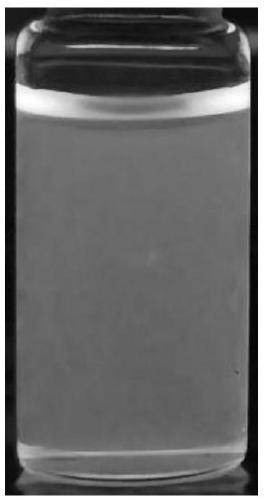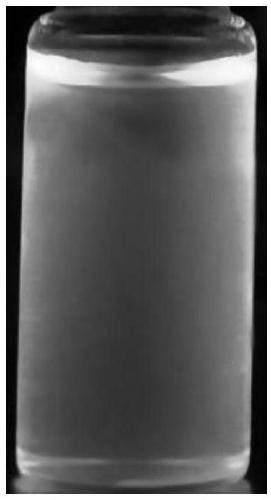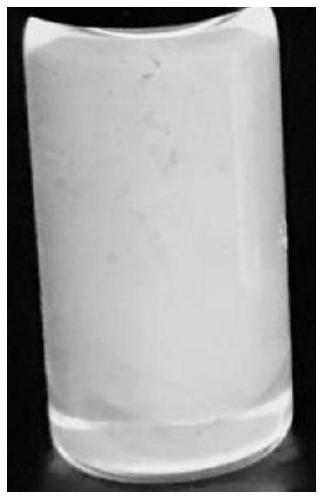Cross conjugated polymer, method for preparing same and application of cross conjugated polymer
A cross-conjugation, polymer technology, applied in the polymer field, can solve the problems of limiting the scope of synthesis of cross-conjugated polymers, environmental pollution, reducing the practicality of synthesis methods, etc., and achieves excellent optical properties, good processing performance, and yield. high effect
- Summary
- Abstract
- Description
- Claims
- Application Information
AI Technical Summary
Problems solved by technology
Method used
Image
Examples
Embodiment 1
[0039] Example 1: Polymer 1
[0040] Add 1 mmol of diiodobenzene into the Schlenk reaction tube, ( Z )-1-methyl-2-(1-phenylethylidene)hydrazine 0.8 mmol, palladium acetate 0.1 mmol, BrettPhos 0.2 mmol, sodium methoxide 1 mmol. Add 5 mL of toluene as a solvent, then stir the reaction tube in an oil bath at 70°C for 12 hours, then cool the reaction to room temperature, extract with ethyl acetate, wash with saturated brine, and dry over anhydrous sodium sulfate. The solvent was evaporated to obtain the initial product. The sample was precipitated three more times in methanol and dried in vacuo to constant weight to obtain yellow cross-conjugated polymer 1.
Embodiment 2
[0041] Example 2: Polymer 2
[0042] Add 1 mmol of diiodobenzene, 3,6-bis(( E )-1-(2-methylhydrazino)ethyl)-9 H - Carbazole 0.8 mmol, Palladium acetate 0.1 mmol, BrettPhos 0.2 mmol, Sodium methoxide 1 mmol. Add 5 mL of toluene as a solvent, then stir the reaction tube in an oil bath at 70°C for 12 hours, then cool the reaction to room temperature, extract with ethyl acetate, wash with saturated brine, and dry over anhydrous sodium sulfate. The solvent was evaporated to obtain the initial product. The sample was precipitated three more times in methanol and dried in vacuo to constant weight to obtain yellow cross-conjugated polymer 2.
Embodiment 3
[0043] Example 3: Polymer 3
[0044] Add 1 mmol of diiodobenzene, 10-(2-ethylhexyl)-3-((E)-1-(2-methylhydrazino)ethyl)-7-(( Z )-1-(2-methylhydrazino)ethyl)-10 H - phenothiazine 0.8 mmol, palladium acetate 0.1 mmol, BrettPhos 0.2 mmol, sodium methoxide 1 mmol. Add 5 mL of toluene as a solvent, then stir the reaction tube in an oil bath at 70°C for 12 hours, then cool the reaction to room temperature, extract with ethyl acetate, wash with saturated brine, and dry over anhydrous sodium sulfate. The solvent was evaporated to obtain the initial product. The sample was precipitated three more times in methanol and dried in vacuo to constant weight to obtain yellow cross-conjugated polymer 3.
[0045] Optical properties of the second part of the polymer of the present invention
[0046] The ultraviolet spectra of the cross-conjugated polymers synthesized by the present invention show that the maximum absorption wavelength of these polymers in tetrahydrofuran (THF) is in the range...
PUM
 Login to View More
Login to View More Abstract
Description
Claims
Application Information
 Login to View More
Login to View More - R&D
- Intellectual Property
- Life Sciences
- Materials
- Tech Scout
- Unparalleled Data Quality
- Higher Quality Content
- 60% Fewer Hallucinations
Browse by: Latest US Patents, China's latest patents, Technical Efficacy Thesaurus, Application Domain, Technology Topic, Popular Technical Reports.
© 2025 PatSnap. All rights reserved.Legal|Privacy policy|Modern Slavery Act Transparency Statement|Sitemap|About US| Contact US: help@patsnap.com



